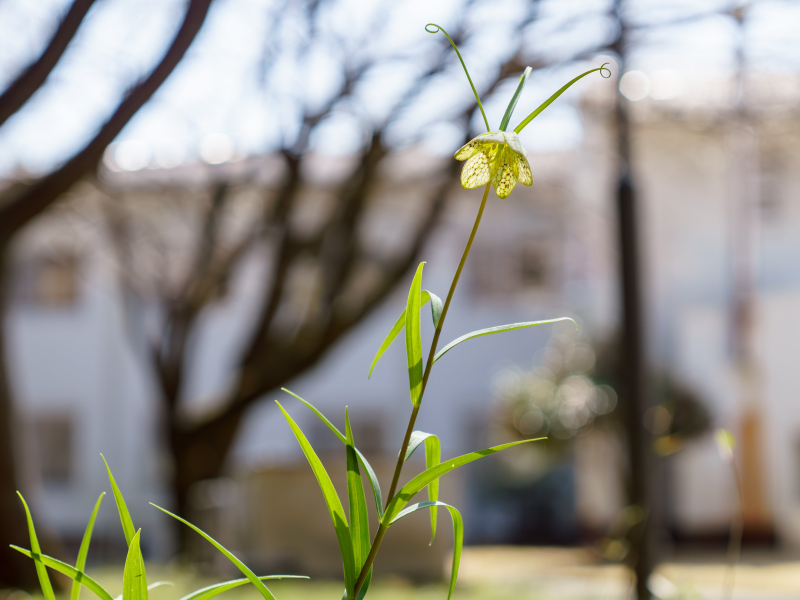フィールド日記
2025.04.25
ゼンマイ
ゼンマイが生えています。草地や樹林内に生える夏緑性のシダ植物です。春の山菜としてよく知られています。葉は胞子葉と栄養葉で分かれており、食用には栄養葉が利用されます。

"Zenmai (ゼンマイ)" plants are sprouting. They are a summergreen fern that grows on grass fields and in forests. Zenmai is known as an edible fern. The shapes of the fertile and sterile fronds are different, and the sterile fronds are used as food.
2025.04.22
サルトリイバラ
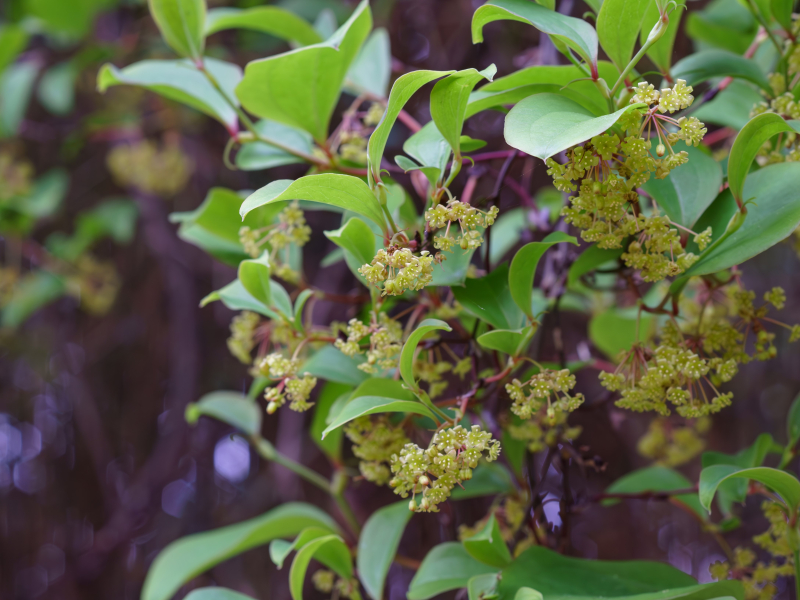
"Sarutoriibara (サルトリイバラ)" trees are in bloom. They are deciduous climbs that are often seen on the edges of forests. The name suggests that their bushes created by their thorny branches catch monkeys.
2025.04.18
セントウソウ
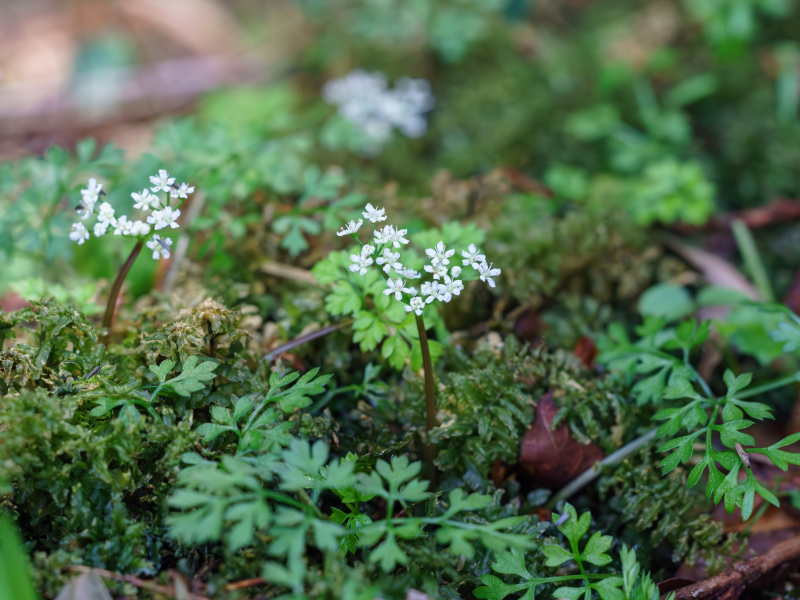
2025.04.15
コクサギ
コクサギが咲いています。林内の沢沿いに生える落葉低木です。ミカン科に属し、葉に独特の匂いがあります。和名は小臭木(こくさぎ)の意味で、独特の匂いがあることに由来します。
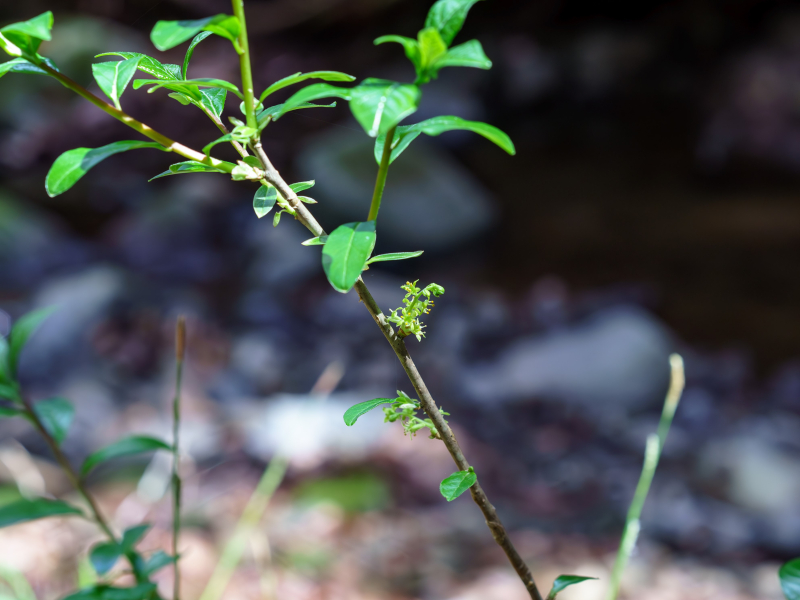
2025.04.11
カントウミヤマカタバミ
カントウミヤマカタバミが咲いています。樹林内に生え、白い花を咲かせるカタバミです。ミヤマカタバミの変種とされ、葉の裏面の毛が少ないなどの特徴があります。

2025.04.08
ソメイヨシノ
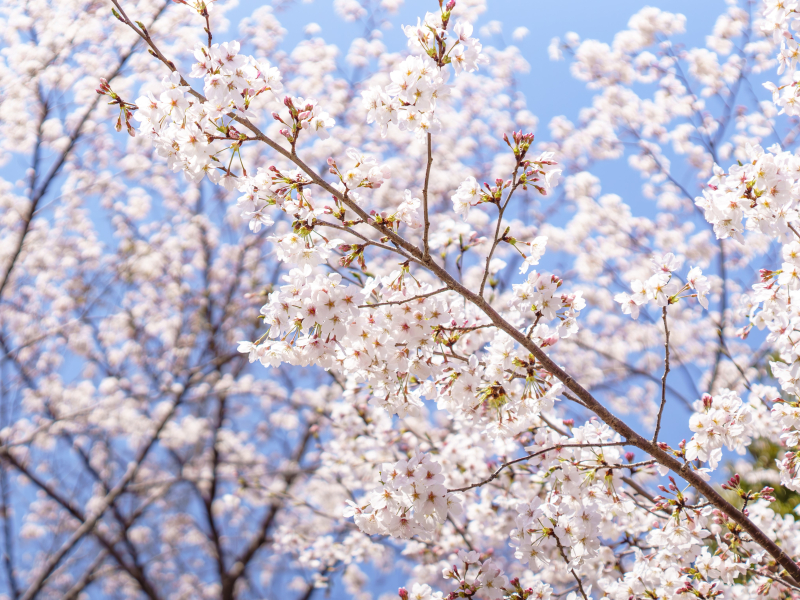
2025.04.04
ワラビ
ススキ野原でワラビが出てきています。山菜として知られるシダ植物で、春になると地下にある茎から葉が伸びてきます。山菜としては写真のような開く前の葉を利用します。
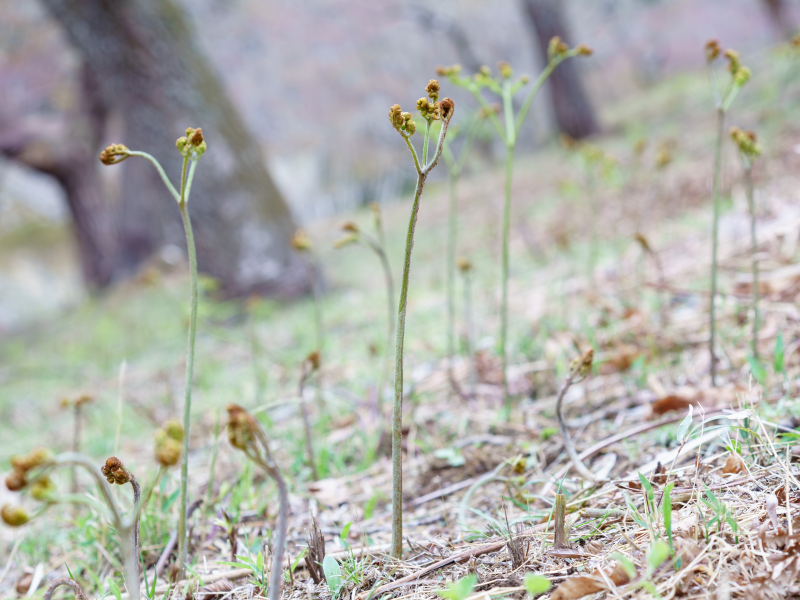
"Warabi (ワラビ)" plants are beginning to sprout in the Japanese pampas grass field. They are a fern known as an edible plant. In spring, they extend their leaves from underground stems. As a mountain vegetable, we typically harvest and use the young and unopened leaves like those in the photo.
2025.04.01
タラノキ
タラノキの新芽が伸びています。伐採跡地などにいち早く生えてくる落葉低木です。新芽はタラの芽と呼ばれ、春の山菜として親しまれており、栽培品はスーパーなどでも売られています。鹿の好物でもあるらしく、キャンパス内でも食べられた跡をよく見ます。
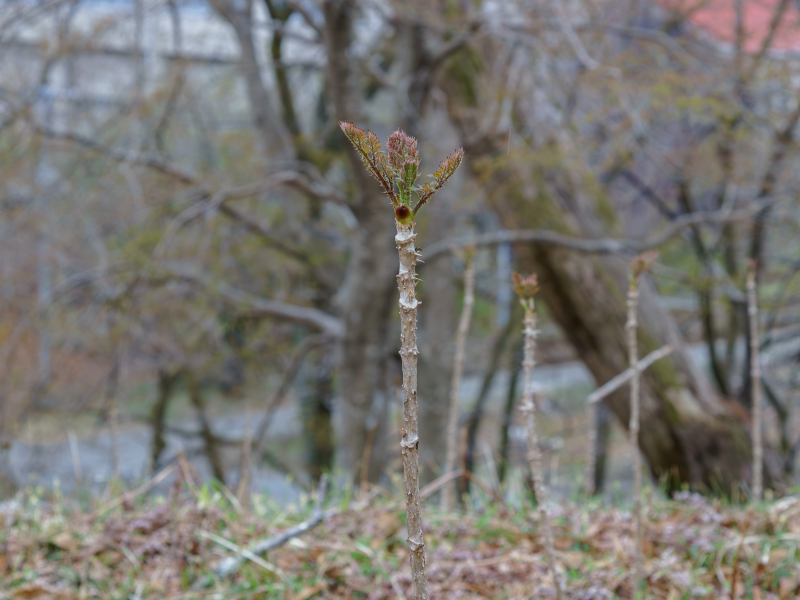
2025.03.28
キブシ
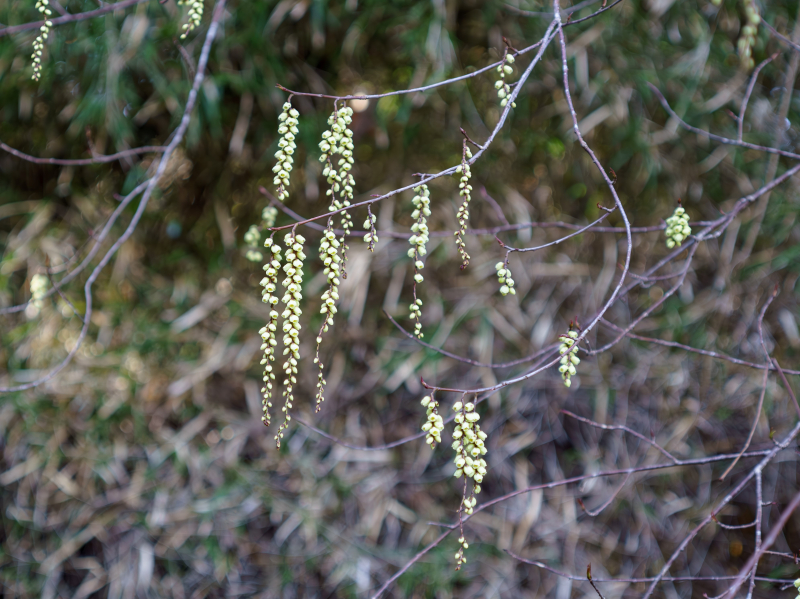
2025.03.25
バイモ
バイモが咲いています。中国原産の薬用植物ですが、観賞用に植えられることもあります。道端などには野生化したものが見られます。アミガサユリとも呼ばれ、花の内側に網目模様があることに由来するようです。
